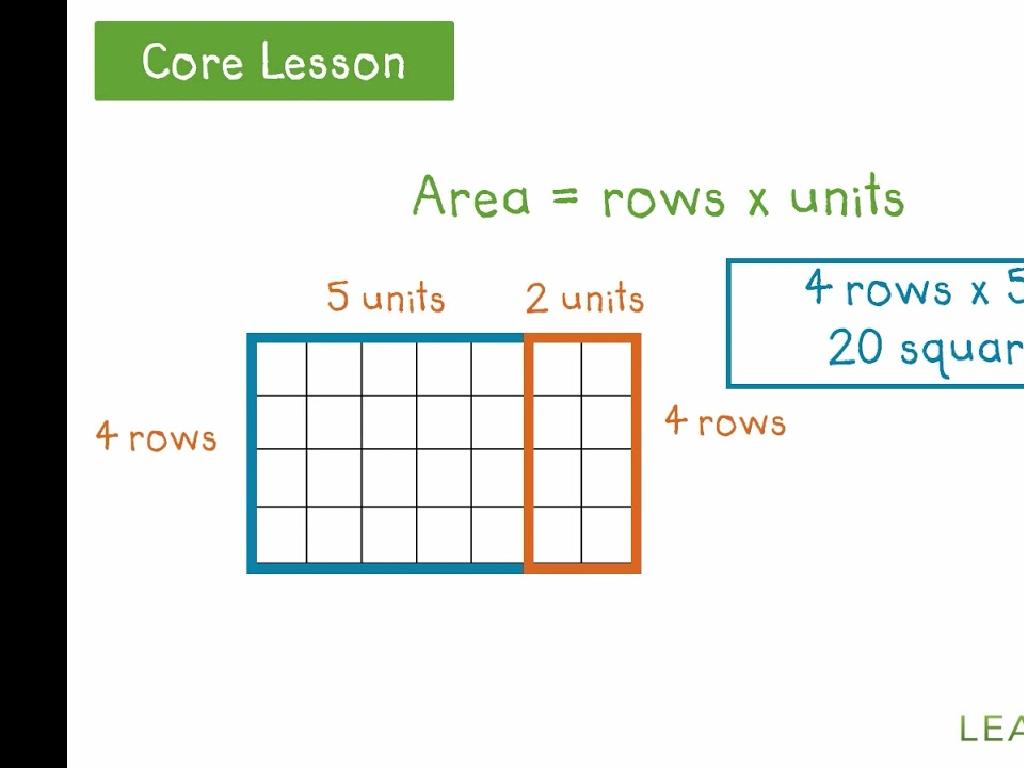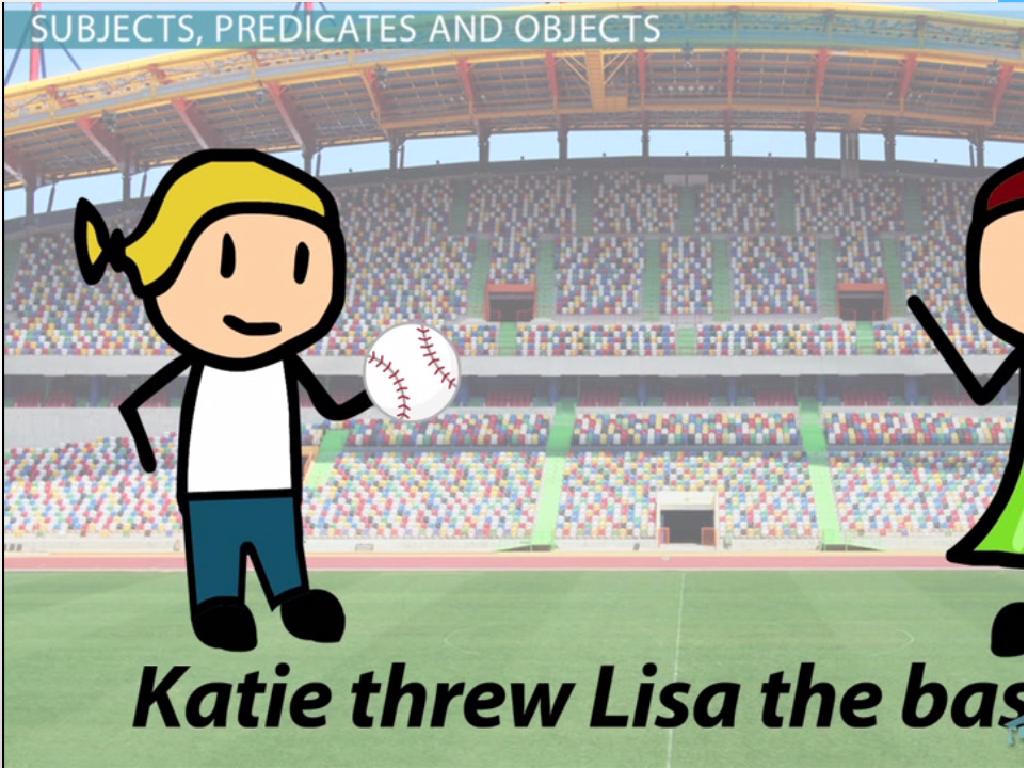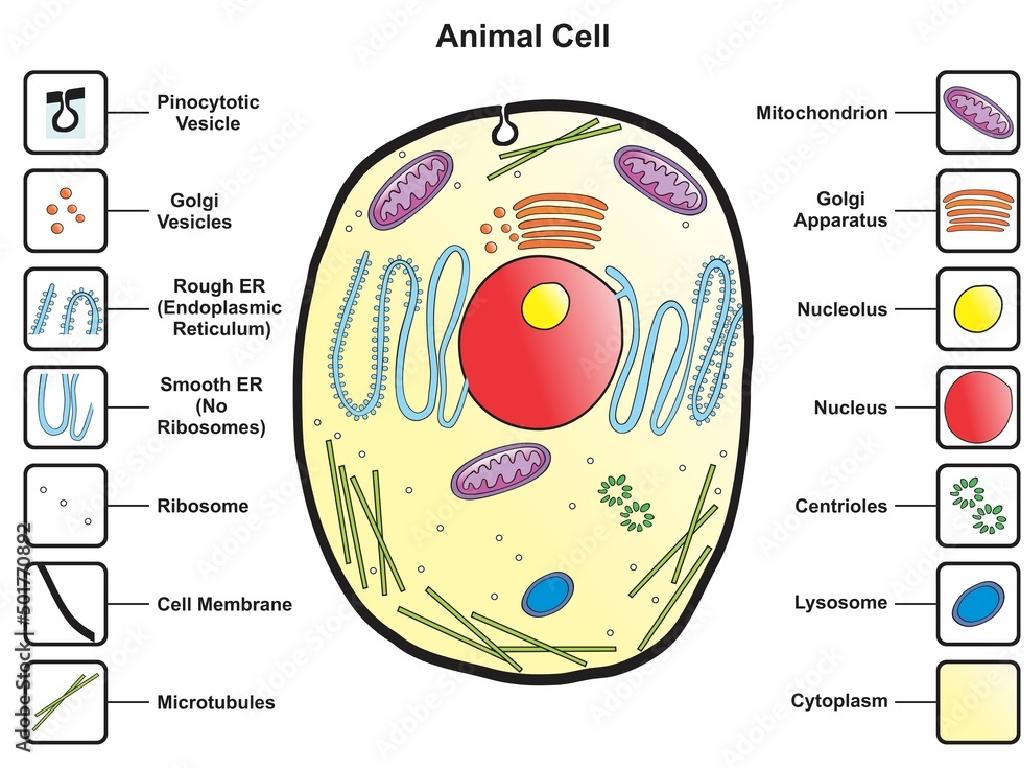Identify The Predicate Of A Sentence
Subject: Language arts
Grade: Second grade
Topic: Sentences, Fragments, And Run-Ons
Please LOG IN to download the presentation. Access is available to registered users only.
View More Content
Today’s Adventure: Finding the Predicate!
– What is a sentence?
– A sentence has a subject and a predicate and expresses a complete thought.
– Sentence vs. Fragment
– Fragments are incomplete sentences missing a subject or predicate.
– Run-on sentences
– Run-ons are sentences joined without proper punctuation or conjunctions.
– Discovering predicates
– The predicate tells us what the subject does or is like.
|
This slide introduces the concept of predicates within the context of understanding sentences, fragments, and run-ons. Begin by explaining that a sentence is a complete thought that has both a subject (who or what the sentence is about) and a predicate (what the subject is doing or what condition the subject is in). Contrast this with fragments, which are incomplete thoughts, and run-ons, which improperly combine two sentences. Emphasize the predicate as the part of the sentence that tells us about the action or state of being of the subject. Use examples to illustrate each point and engage the students with simple exercises to identify predicates in sentences. Encourage students to come up with their own sentences and identify the predicates.
Understanding Sentences
– A sentence: a complete thought
– Two main parts: subject and predicate
– For example, in ‘The cat sleeps,’ ‘The cat’ is the subject.
– Subject: ‘who’ or ‘what’
– It’s the person, place, thing, or idea doing something or being something.
– Predicate: ‘what about’ the subject
– The predicate is ‘sleeps,’ telling us what the cat is doing.
|
This slide introduces the basic structure of a sentence to second-grade students. It’s crucial to explain that a sentence is not just a random collection of words, but a complete thought that makes sense on its own. Highlight the two essential parts of a sentence: the subject and the predicate. The subject is the main focus of the sentence, which can be a person, place, thing, or idea. The predicate provides information about what the subject is doing or what is happening to the subject. Use simple examples to illustrate these concepts, such as ‘The dog barks.’ where ‘The dog’ is the subject and ‘barks’ is the predicate. Encourage students to practice by identifying subjects and predicates in sentences you provide.
Meet the Predicate
– Predicate tells about the subject
– It contains a verb
– Action words like ‘run’, ‘eat’, ‘think’
– Tells what the subject does
– Example: ‘The cat is sleeping on the mat’
– ‘is sleeping on the mat’ describes what the cat does
|
The predicate is a key component of a complete sentence, providing information about what the subject is doing. It’s essential for second graders to recognize that the predicate includes a verb an action or state of being. Use simple, familiar examples to illustrate predicates, such as actions commonly performed by animals or people. In the given example, emphasize how ‘is sleeping on the mat’ gives us more information about what the cat, the subject of the sentence, is doing. Encourage students to practice by identifying predicates in sentences both from literature and their own writing.
Finding the Predicate in Sentences
– First, locate the sentence’s subject
– Ask: ‘What’s the subject doing?’
– If the subject is ‘dog’, what is the dog doing?
– The answer is the predicate!
– ‘The dog barks loudly.’ – ‘barks loudly’ is the predicate.
– Practice with example sentences
|
This slide is aimed at teaching second graders how to identify the predicate in a sentence. Begin by explaining that the predicate tells us what the subject is doing or what is happening to the subject. Use simple and familiar examples to illustrate this point. For instance, in the sentence ‘The cat sleeps on the mat,’ ‘sleeps on the mat’ is the predicate because it describes what the cat is doing. Encourage students to practice with multiple examples and to ask the key questions to find the predicate. Provide guidance and feedback as they work through examples.
Let’s Practice Together: Finding the Predicate
– Understand the predicate concept
– Example 1: The dog barked loudly
– ‘barked loudly’ tells what the dog did
– Example 2: The leaves were blown away
– ‘were blown away’ tells what happened to the leaves
– Identify predicates in sentences
|
This slide is designed to be an interactive practice for identifying predicates in sentences. Begin by explaining that the predicate is the part of the sentence that tells us what the subject does or is like. Use Example 1 to show that ‘barked loudly’ is the predicate because it tells us what the dog (the subject) did. Similarly, use Example 2 to explain that ‘were blown away’ is the predicate because it describes what happened to the leaves (the subject). After discussing the examples, encourage students to find the predicates in new sentences. Provide guidance and positive reinforcement as they work through the examples.
Sentence, Fragment, or Run-on?
– What makes a full sentence?
– A sentence has a subject (who or what) and a predicate (what about it).
– What is a sentence fragment?
– A fragment is missing a subject or predicate and doesn’t express a complete thought.
– What is a run-on sentence?
– A run-on is two sentences squished together without a pause or link.
– How to fix fragments and run-ons?
– Use punctuation or conjunctions to connect or separate ideas properly.
|
This slide introduces the basic concepts of sentence structure to second graders. Start by explaining that a sentence must have both a subject and a predicate to be complete. Then, describe a fragment as an incomplete sentence that leaves the listener or reader hanging because it lacks either a subject or predicate. Next, define a run-on sentence as two complete thoughts that are incorrectly joined without the necessary punctuation or connecting words. Finally, discuss how to correct fragments and run-ons, emphasizing the use of periods, commas, and conjunctions to make sentences clear and understandable. Use examples to illustrate each point and engage the students with simple exercises to identify and correct sentence errors.
Activity Time: Predicate Hunt!
– Read a story as a class
– Find predicates in sentences
– The predicate tells what the subject does or is like
– Pair up for ‘Predicate Detective’
– Discuss with your partner and decide
– Use your worksheet
– Mark them on your worksheet
|
This activity is designed to help students identify the predicate part of a sentence in a fun and interactive way. The predicate is the part of the sentence that tells us what the subject does or what happens to the subject. Teachers should select a short story appropriate for second graders, read it aloud, and then guide the students through the process of finding the predicates. Working in pairs allows students to discuss and collaborate, reinforcing their understanding. The ‘Predicate Detective’ worksheet will serve as a tool for them to record their findings. Teachers should circulate the room, assist pairs as needed, and ensure that each student is engaged and participating in the activity. Possible variations of the activity could include having students come up with their own sentences, drawing pictures of the actions in the predicates, or even acting out the predicates for the class.
Class Activity: Crafting Sentences
– Be an author: write about animals
– Create three sentences
– Think of your favorite animal and what it does
– Each sentence needs a subject
– Who or what the sentence is about
– Each sentence needs a predicate
– What the subject does or is like
|
This activity is designed to help students practice constructing complete sentences with a clear subject and predicate. Begin by explaining that the subject is who or what the sentence is about, and the predicate tells us what the subject does or is like. Provide examples on the board, such as ‘The cat (subject) sleeps on the mat (predicate).’ Encourage creativity and sharing among students to foster a fun learning environment. Possible activities: 1) Students write sentences and illustrate them. 2) Pair students to guess each other’s favorite animal based on their sentences. 3) Create a sentence gallery walk. 4) Have students act out their sentences. 5) Create a class book with all the sentences.
Review and Share: Finding Predicates
– Reviewing predicates together
– Share your sentences aloud
– Read the sentences you wrote to the class
– Classmates find the predicates
– Listen and spot the action or state of being
– Understanding sentence structure
|
This slide is meant to consolidate the students’ understanding of predicates in sentences. Begin by reviewing the concept of predicates as the part of the sentence that tells us what the subject does or is. Encourage students to share the sentences they have written with the class, fostering a collaborative learning environment. As each student reads their sentence, ask the rest of the class to listen carefully and identify the predicate. This activity will help reinforce their ability to recognize predicates and understand sentence structure. Provide guidance and positive feedback to ensure all students feel confident in their ability to identify predicates.
Becoming Predicate Detectives: Homework
– Congratulations, Predicate Detectives!
– Homework: Find 3 sentences in a book
– Choose any book you love reading
– Identify the predicates
– Look for the action part or what’s being said about the subject
– Share your findings tomorrow
|
Well done to all the students for learning about predicates today! As homework, each student is tasked with finding three sentences from any book they enjoy and identifying the predicates. Remind them that the predicate is the part of the sentence that tells us what the subject is doing or what is happening to the subject. This exercise will help reinforce their understanding of predicates and prepare them for sharing and discussing their sentences in class the next day. Encourage them to pick sentences they find interesting or fun to share with their classmates.





